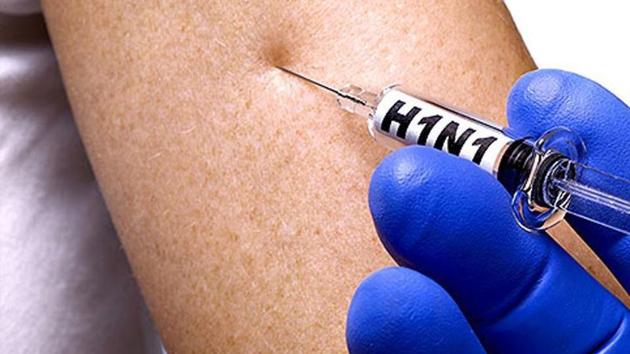Swine flu on the rise among India’s young, kills 600 in first half of 2017
Studies point towards a new strain of H1N1 virus: the Michigan strain, which has been in circulation since the end of 2016 and has replaced the earlier California strain. Till July 9, H1N1 affected 12,460 people and caused 600 deaths.
The first half of 2017 has seen a spurt in the number of deaths and infections caused by Influenza A (H1N1), popularly referred to as swine flu in India.

Till July 9, H1N1 affected 12,460 people and caused 600 deaths as against 1,786 infections and 265 deaths in the whole of last year.
Experts are also alarmed at the number is high among young adults. About 40% of the deaths and 50% of the infections are among people in the 20-50 years age group, with no co-morbid conditions.
Dr Pradeep Awate, state surveillance officer, Maharashtra, said this could be because young people move a lot, and are therefore vulnerable to swine flu, which is an air-borne infection. His state has topped the list in the country with 2,324 cases and 284 deaths so far.
Authorities blamed it on indiscriminate testing — even when unnecessary — by private laboratories.
“Flu outbreaks offer people a herd immunity that lasts for a year or two. Since Maharashtra had fewer cases in 2016, there is a higher number this year,” Dr Awate said.
What is encouraging, according to experts, is that the situation no longer demands isolating H1N1-positive people as was done to contain the spread in 2009, when the virus was new to India and affected close to 50,000 people and killed more than 2,700.
Antigenic Shift
The National Institute of Virology, Pune, ruled out mutation theory and some experts believe that the jump in numbers could be attributed to two factors: antigenic drift and the spread of a different strain (sub-type of virus) of H1N1 virus.
According to the US Centres of Disease Control, “antigenic drift are small changes in the genes of influenza viruses that happen continually over time as the virus replicates. These small genetic changes usually produce viruses that are closely related to one another… and an immune system exposed to a similar virus will usually recognise it and respond. But these small genetic changes can accumulate over time and result in viruses that are anti-genically different.... When this happens, the body’s immune system may not recognise those viruses.”
Dr Chand Wattal, honorary consultant in clinical microbiology at New Delhi’s Sir Ganga Ram Hospital, however, said antigenic drift was not a major issue. “If the virus mutates, then we consider it a problem.”
The Michigan Strain
On the other hand, the studies point towards a new strain of H1N1 virus: the Michigan strain, which has been in circulation since the end of 2016 and has replaced the earlier California strain.
NIV says it is not more virulent than the California strain. “Before the H1N1 came to India in 2009, H3N2 was the dominant flu strain since 1919. Now it is H1N1, and till everyone has immunity, waxing and waning of cases and deaths will happen,” said a researcher from National Centre for Disease Control (NCDC).
“Also, if we compare deaths reported due to communicable diseases such as TB or diarrhoea, the swine flu-related deaths are much lower,” he said. The World Health Organisation has also recommended a vaccine for the new strain, named as A/Michigan/45/2015 to replace A/California/7/2009.

Testing for Flu
The government’s guidelines do not recommend anyone with fever to be randomly tested, and divides cases in three categories — a, b and c, wherein category ‘a’ is of people who experience mild symptoms, category ‘b’ is people with moderate symptoms and ‘c’ are those with severe symptoms. They recommended use of medicines in category ‘b’ and ‘c’ patients, as those with mild symptoms are capable of recovering at home with symptomatic treatment, and treatment if symptoms are serious and the person has difficulty breathing.
Vaccines and Medicines
On the new vaccine recommended by WHO, Dr Soumya Swaminathan, director of the Indian Council of Medical Research said it was needed as the current one “may be ineffective”.
Though no vaccine provides 100% protection, it is advisable to take a shot if one is at high risk, especially if suffering from diabetes, hypertension, on immunosuppressants, cancer treatment, etc.
The Drug Controller General of India (DGCI) recently eased norms for the sale of anti-viral medicine Oseltamivir and Zanamivir, which are used to treat H1N1.
The sale so far was restricted to only a handful of chemists until now, but the new notification allows more pharmacies to sell the medicine. However, a signed and stamped prescription from a registered medical practitioner is still needed to buy the medicine over the counter.
Catch your daily dose of Fashion, Health, Festivals, Travel, Relationship, Recipe and all the other Latest Lifestyle News on Hindustan Times Website and APPs.




